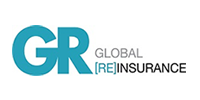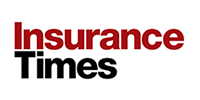Insurers in the UAE show signs of resilience following last year’s record rainfall, according to a new report from rating agency AM Best.
After the heaviest rainfall in 75 years, the United Arab Emirates’ (UAE) insurance sector has demonstrated impressive resilience, according to a report from AM Best.

The unprecedented weather event in April 2024 led to insured losses of between $2.9bn and $3.4bn, most of which were borne by international reinsurers, the rating agency’s paper observed.
Despite the scale of disruption, the market posted a 12% year-on-year increase in post-tax profits and a 21% rise in insurance revenue, reaching AED 37.2bn from AED 30.7bn the year before.
AM Best attributed the insurance market growth largely to higher premium rates, particularly in motor and property segments, as well as active mergers and acquisitions (M&A) activity.
The majority of UAE-listed insurers reported a positive trajectory in profitability, even as the sector faces growing scrutiny around catastrophe modelling, according to the ratings firm.
“Given the changing nature and frequency of weather-related events…insurers will need to develop expertise in modelling other potential loss exposures,” the report warned.
Rate hardening and competitive recalibration
The impact of the April rains extended beyond claims, driving up reinsurance premiums and prompting local insurers to pass on these costs through rate hikes.
AM Best found that “reinsurance programmes in place were appropriately structured to absorb the losses,” but also highlighted that “gross reported losses were in some cases greater than the PML estimates.”
Technical performance showed signs of recovery, particularly in motor insurance, where the removal of mandatory premium discounts in August 2023 yielded “visible positive results”.
The report noted that this, combined with “further strengthening of motor premium rates,” helped support technical profitability despite the surge in claims.
The medical segment, however, remained under pressure.
While some insurers trimmed unprofitable accounts, the sector continues to be marred by high claims utilisation and inflation.
Still, the upcoming expansion of mandatory medical cover to the Northern Emirates in January 2025 presents a growth opportunity.
“Some insurers…may achieve strong topline growth and benefit from improved economies of scale,” AM Best stated.
Growth leaders and consolidation pressures
The UAE insurance landscape remains highly concentrated, with the top five insurers accounting for 66% of total insurance revenue and 85% of total profits.
Orient Insurance retained its position as market leader, reporting AED 7.6bn in revenue—a 19% increase, the paper said.
ADNIC followed closely, posting a 55% revenue jump to AED 7.2bn driven by its acquisition of a majority stake in Allianz Saudi Fransi.
Yet, profitability gains were not evenly spread. AM Best observed that “Salama and Sukoon Takaful experienced a complete turnaround… achieving a profit growth of over 100%,” while Al-Sagr swung from a modest profit in 2023 to an underwriting loss of AED 114.8m in 2024.
In addition to financial divergence, regulatory pressures are squeezing smaller players. Six insurers failed to meet solvency requirements in 2024, three of which reported negative solvency ratios.
“The deteriorating conditions for these companies will likely either result in further regulatory intervention or market consolidation,” the report cautioned.
The adoption of IFRS 17 accounting rules continued to reshape financial reporting in the sector.
AM Best noted that “the market will gain a deeper understanding of the new accounting standard over time,” although for now, most regulatory reporting remains under the previous IFRS 4 framework.
Despite macroeconomic headwinds and operational complexities, AM Best concluded on a note of guarded optimism.
The UAE’s re/insurance industry, shaped by both natural catastrophe and market correction, has shown it can adapt and grow.
“Overall, insurance service results in 2024 showed a 14% increase…aligning with AM Best’s general expectations given the corrective measures taken by the industry in terms of risk management and improvement in technical pricing,” the report concluded.










No comments yet